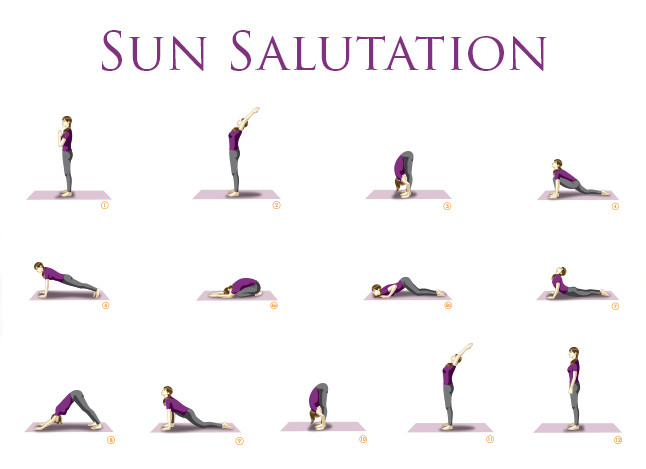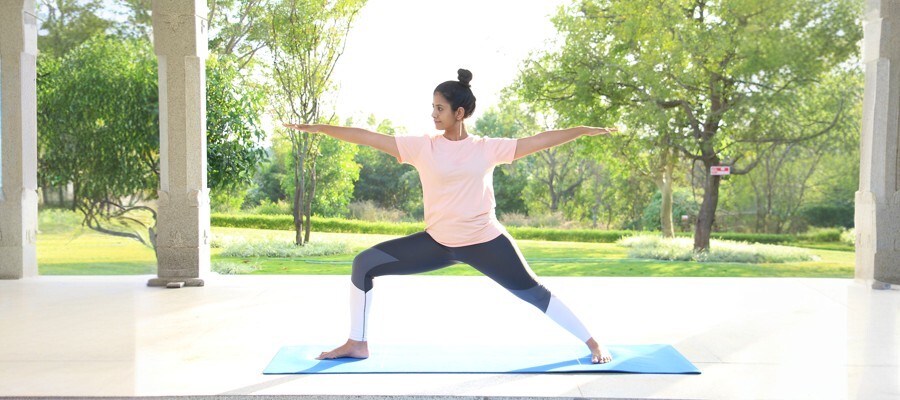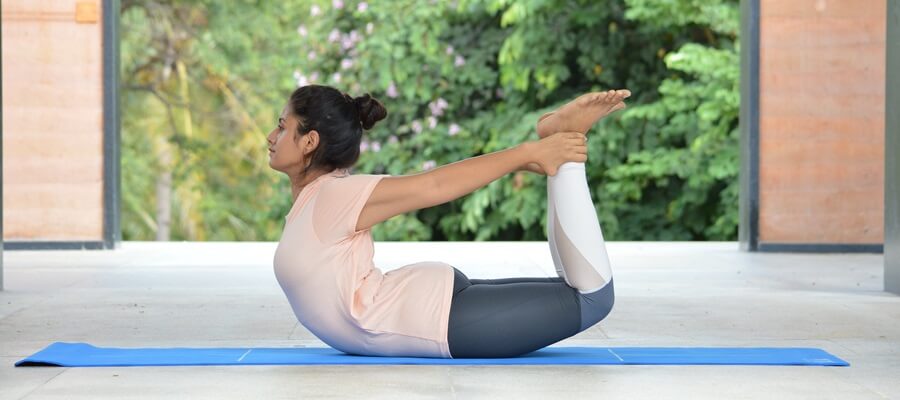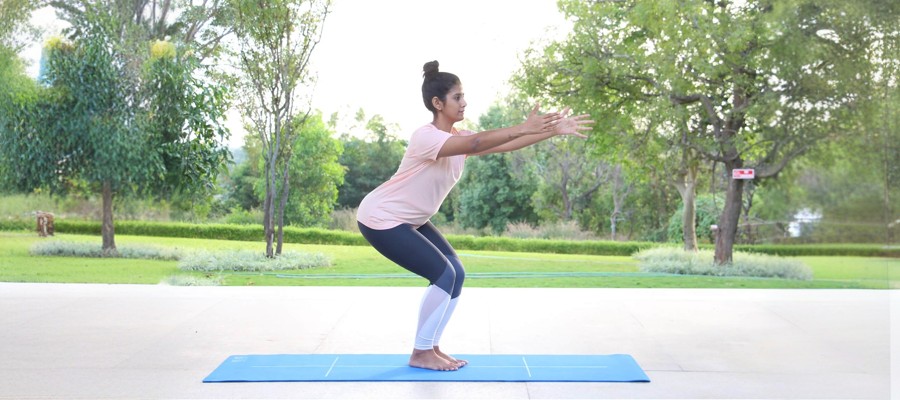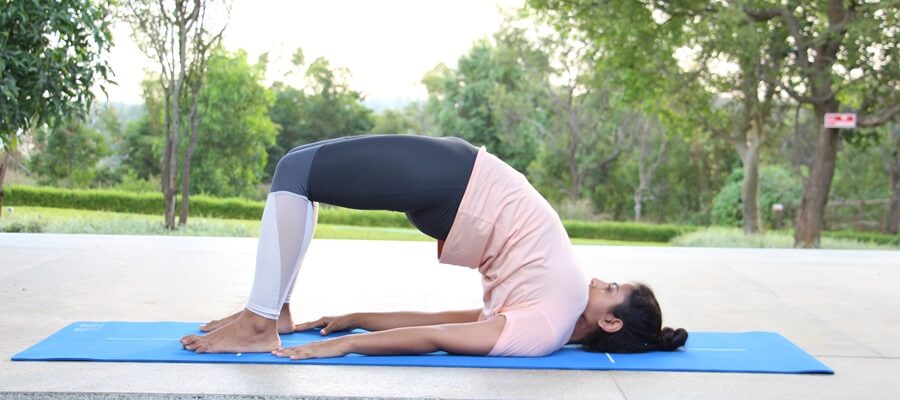Frustrated with futile weight loss efforts under numerous diets and rigorous exercise regimens, you are feeling utterly drained now. Melding dynamic yoga sequences like Surya Namaskar with a bespoke diet regimen could catapult you towards a rather significant breakthrough in weight loss journeys. Yoga torches calories and reduces stress remarkably well while balancing hormones somewhat unevenly, fostering mindfulness key to losing weight sustainably.
Surya Namaskar, a flowing sequence of 12 poses rooted deeply in ancient yogic tradition, boosts metabolism pretty effectively and sculpts the body with great mental clarity. This holistic approach yields remarkably swift results and keeps you surprisingly energized when paired with a diet rich in nutrients.
In this comprehensive guide, we’ll explore the 8 best yoga poses for weight loss, with an in-depth look at Surya Namaskar, to help you boost metabolism, tone muscles, and burn fat. We’ll also provide a detailed diet plan for weight loss to complement your yoga practice, plus lifestyle tips to maximize results. Backed by science and expert insights, this article offers actionable steps to transform your body and mind.
Ready to start? Let’s dive in!
Why Yoga Poses for Weight Loss Work
Yoga serves as a scientifically validated tool for shedding pounds effectively beyond merely stretching in various intense, physically demanding poses daily. Yoga reduces cortisol quite significantly and boosts metabolism rapidly while building lean muscle.
Surya Namaskar elevates heart rate quite rapidly, burning around 13 to 15 calories per round according to a 2016 study published in the Journal of Physical Activity and Health. That's around 150 calories over 10 rounds, comparable roughly to energetic strolling briskly.
Unlike high-intensity workouts, yoga poses for weight loss are low-impact, making them accessible for beginners and sustainable for long-term practice. They enhance mindfulness, helping you avoid emotional eating and make better food choices. Yoga also improves flexibility, posture, and mental focus, creating a foundation for a healthier lifestyle.Benefits of Yoga for Weight LossStress Reduction: Lowers cortisol, reducing fat storage.
- Metabolic Boost: Increases calorie burn through muscle engagement.
- Mindful Eating: Enhances awareness, curbing overeating.
- Sustainability: Low-impact nature suits all fitness levels.
The 8 Best Yoga Poses for Weight Loss
Eight expertly curated yoga poses are listed below for shedding pounds, including a detailed rundown of Surya Namaskar, which boosts metabolic rate vigorously. Perform these poses several times weekly, ideally three or five times for optimal fantastical results naturally. Always consult a healthcare provider before starting a new exercise regimen.
1. Surya Namaskar (Sun Salutations)

Surya Namaskar or Sun Salutations combines strength, flexibility, and cardio in 12 poses,
making it super effective for shedding pounds. It venerates the sun's fierce energy deeply
while vigorously engaging the entire body in a ritual rooted somehow in hoary Vedic
tradition. A 2016 study published in the Journal of Physical Activity and Health reckons
roughly 13–15 calories get torched per round, with 10 rounds singing up to 150 calories.
How to Do It: Prayer Pose (Pranamasana): Stand with feet together, hands in prayer at chest.
Raised Arms Pose (Hasta Uttanasana): Inhale, raise arms overhead, arch back slightly.
Forward Fold (Hasta Padasana): Exhale, bend forward, touch the floor or shins.
Equestrian Pose (Ashwa Sanchalanasana): Inhale, step right leg back, left knee bent, look up.
Plank Pose (Dandasana): Hold breath, step left leg back, form a straight line.
Eight-Limbed Pose (Ashtanga Namaskara): Exhale, lower knees, chest, chin to floor.
Cobra Pose (Bhujangasana): Inhale, lift chest, keep legs extended.
Downward-Facing Dog (Adho Mukha Svanasana): Exhale, lift hips into an inverted V.
Equestrian Pose: Inhale, step right leg forward, left leg back, look up.
Forward Fold: Exhale, step left leg forward, bend at the hips.
Raised Arms Pose: Inhale, raise arms overhead, arch back.
Prayer Pose: Exhale, return to standing, hands at chest.
Complete 5–10 rounds, moving with breath (one round = right and left sides).
Benefits:
- Burns 13–15 calories per round, up to 150 calories for 10 rounds.
- Tone arms, legs, core, and glutes.
- Improves cardiovascular health and flexibility.
- Enhances mental focus, reducing stress-related eating.
- Stimulates digestion, aiding fat metabolism.
Variations:
- Beginners: Start with 2–3 rounds, keep knees down in Plank, or step instead of jumping.
- Advanced: Increase to 12–15 rounds, add jumps between poses, or hold each pose longer.
- Scientific Backing: Surya Namaskar boosts aerobic capacity fairly significantly and enhances fat oxidation. Practice in morning light, aligning with the sun's energy, boosts metabolism vigorously throughout the entire day quite remarkably. Grip can be greatly enhanced by utilizing a decent yoga mat underneath you during various strenuous exercises and bodily contortions.
2. Warrior II (Virabhadrasana II)
Warrior II strengthens legs, core, and arms remarkably while boosting stamina greatly in a standing pose. Engaging large muscle groups ramps up calorie burn significantly and spurs fat loss, making it super popular in weight loss yoga routines nowadays.How to Do It: Stand with feet wide apart. Turn your right foot out 90 degrees, bend your right knee until it’s over your ankle, and extend your arms parallel to the ground. Gaze over your right hand and hold for 30–60 seconds. Repeat on the left side.
Benefits:- Tone thighs, glutes, and core.
- Boosts metabolism through muscle activation.
- Improves balance and mental focus.
Tip: Keep your shoulders relaxed and breathe deeply to avoid tension.
3. Plank Pose (Phalakasana)
Plank pose serves as a remarkably intense full-body exercise, strengthening core muscles and engaging shoulders simultaneously with considerable upper back activation. It packs a punch, burning calories at an alarmingly high rate, effectively slimming down folks fast while sculpting a pretty buff body sustainably.
How to Do It: Start in a push-up position with hands under shoulders, body in a straight line. Engage your core and hold for 30–90 seconds.
Benefits:- Builds core strength, reducing belly fat.
- Improves posture, preventing injuries.
- Burns calories through isometric contraction.
Tip: Avoid letting hips sag; modify by dropping knees if needed.
4. Chair Pose (Utkatasana)
Chair pose eerily simulates perching precariously on some nonexistent throne, engaging quads, glutes, and core muscles vigorously from underneath. It's a metabolic behemoth perfect for chiseling legs and torching calories rapidly with intense physical exertion during exercise routines.
How to Do It: Stand with feet together, bend knees, lower hips as if sitting, and raise arms overhead. Hold for 30–60 seconds.
Benefits:- Strengthens legs and glutes.
- Increases heart rate, promoting fat loss.
- Enhances stamina and balance.
Tip: Keep weight in heels and chest lifted for stability.
5. Boat Pose (Navasana)
The Boat pose effectively targets abdominal muscles, making it supremely suitable for toning midsections and bolstering weight loss endeavours remarkably well. It enhances digestion pretty significantly, thus aiding the absorption of various nutrients effectively.
How to Do It: Sit on the floor, lift legs to a 45-degree angle, extend arms forward, and balance on sit bones. Hold for 20–60 seconds.
- Strengthens core, reducing visceral fat.
- Improves digestion, supporting a healthy metabolism.
- Enhances balance and focus.
Tip: Bend knees for a beginner-friendly modification.
6. Downward-Facing Dog (Adho Mukha Svanasana)
This iconic pose stretches and strengthens the entire body, making it a staple in yoga for weight loss. It’s also a key component of Surya Namaskar, enhancing its fat-burning potential.
How to Do It: Start on all fours, tuck toes, lift hips toward the ceiling, forming an inverted V. Keep hands shoulder-width apart and hold for 30–60 seconds.
- Tone arms, legs, and core.
- Boosts circulation, aiding detoxification.
- Relieves tension, supporting stress reduction.
Tip: Press heels toward the ground to deepen the stretch.
7. Bridge Pose (Setu Bandhasana)
Bridge pose activates the glutes, core, and lower back, sculpting the body and improving metabolism. It also stimulates the thyroid, which regulates weight.
How to Do It: Lie on your back, knees bent, feet hip-width apart. Lift hips toward the ceiling, squeezing glutes, and hold for 30–60 seconds.
- Strengthens glutes and core.
- Improves thyroid function, aiding weight regulation.
- Burns calories through muscle engagement.
Tip: Keep shoulders relaxed and neck neutral.
8. Twisting Chair Pose (Parivrtta Utkatasana)
The Twisting variation of Chair pose engages core muscles pretty intensely and stimulates digestion fairly quickly, aiding detoxification, making it super effective for weight loss yoga routines.
How to Do It: From Chair pose, bring hands to prayer, twist torso, and hook left elbow outside right knee. Hold for 30 seconds, switch sides.
- Tones oblique and core.
- Improves digestion, supporting nutrient absorption.
- Boosts metabolism through twisting action.
Tip: Keep hips squared and breathe deeply to deepen the twist.
The Ultimate Diet Plan for Weight Loss to Complement Yoga
Yoga poses, particularly calorie-burning Surya Namaskar, are most effective when paired with a balanced diet plan for shedding pounds quickly. Whole nutrient-dense foods fuel the body massively and support muscle recovery nicely after intense yoga sessions, promoting significant fat loss eventually. Daily caloric deficits ranging roughly between 500 and 1,000 calories purportedly yield losses of about 1 or 2 pounds per week. Seek out advice from a dietician very carefully prior to altering your eating habits drastically.
Principles of a Yoga Diet Plan for Weight Loss
A yoga-inspired diet emphasizes mindfulness, balance, and clean eating, aligning with the energy demands of Surya Namaskar and other poses. It supports physical and mental well-being, enhancing the benefits of yoga.
Mindful Eating: Eat slowly, savor each bite, and avoid distractions to prevent overeating, a practice rooted in yoga’s mindfulness principles.
Hydration: Drink 8–10 glasses of water daily to support metabolism, especially after Surya Namaskar’s sweat-inducing flow.
Limit Processed Foods: Avoid sugary snacks, refined carbs, and trans fats, which can sabotage weight loss.
Balanced Macros: Aim for 40% carbs, 30% protein, and 30% fats to fuel yoga and recovery
Sample 7-Day Diet Plan for Weight Loss
1. Include High-Fiber Foods
What to eat: Fruits (apples, papaya, oranges), vegetables (spinach, carrots, broccoli), legumes, whole grains (brown rice, oats, millets)
Benefits:
- Keeps you full longer, reduces cravings, regulates digestion, and regulates blood sugar.
- 1 apple (medium) – 95 kcal
- 1 cup cooked oats – 150 kcal
- 1 cup cooked brown rice – 215 kcal
2. Choose Lean Proteins
What to eat: Dal, tofu, chickpeas, low-fat paneer, eggs, lean meats (chicken breast, fish)Benefits:
- Builds muscle, boosts metabolism, and increases satiety.
- 1 boiled egg – 70 kcal
- 100g tofu – 145 kcal
- 100g cooked dal – ~120 kcal
3. Stay Hydrated, Avoid Sugary Drinks
What to drink: 2–3 liters of water daily, herbal teas, lemon water
Avoid: Soft drinks, sweetened juices
Benefits:
- Flushes toxins, reduces false hunger, supports fat metabolism
- Water/Herbal Tea – 0 kcal
- 1 can soda – ~150 kcal (best avoided)
4. Eat Smaller, Frequent Meals
What to do: Eat 4–5 small meals per day instead of 2–3 large onesBenefits:
- Boosts metabolism, prevents overeating, and energy dips
- Keep each meal around 300–400 kcal, depending on your daily goal (e.g., 1500–1800 kcal/day for weight loss)
5. Avoid Deep-Fried and Processed Foods
Avoid: Chips, instant noodles, pastries, fried snacksWhy: These foods are calorie-dense, low in nutrients, and promote fat storage
Calorie Tip:
- 1 packet chips – ~500 kcal
- Fried samosa – ~300 kcal (Swap with roasted chana or fruit)
6. Try Intermittent Fasting (IF)
What it is: Eat within an 8-hour window (e.g., 12 pm–8 pm), fast for 16 hoursBenefits:
- Supports fat loss, reduces insulin resistance
- Still aim for total daily calories suited to your goal (e.g., 1400–1800 kcal), even within the 8-hour eating window
7. Practice Portion Control
What to do: Use small plates, serve limited portions, and eat mindfullyBenefits:
- Prevents overeating, supports weight awareness
- Rice (1/2 cup) – 100 kcal
- Paneer (50g low-fat) – ~90 kcal
Being calorie-aware helps reinforce portion control habits.
- Meal Prep and Mindful Eating TipsBatch Cook: Prepare grains, proteins, and veggies weekly to save time.
- Portion Control: Use smaller plates or measuring tools to manage portions.
- Mindful Practices: Chew slowly, eat without screens, and practice gratitude for your food to align with yoga’s mindfulness ethos.
- Post-Yoga Nutrition: After Surya Namaskar, refuel with a protein-rich snack (e.g., Greek yogurt or a smoothie) within 30 minutes to aid muscle recovery.
Integrating Yoga and Diet into Your Lifestyle
To maximize the benefits of yoga poses for weight loss and a diet plan for weight loss, integrate them into a holistic lifestyle. Surya Namaskar and the diet plan are most effective when supported by healthy habits.
- Creating a Yoga RoutineMorning Practice: Start your day with 5–10 rounds of Surya Namaskar to boost metabolism and energy. A study in the International Journal of Yoga Therapy found morning yoga enhances fat-burning throughout the day.
- Consistency: Practice 30–60 minutes daily or 3–5 times weekly, mixing Surya Namaskar with other poses like Plank and Warrior II.
- Progression: Beginners start with 2–3 rounds of Surya Namaskar, increasing by 1–2 rounds weekly. Advanced practitioners can aim for 12–15 rounds.
- Environment: Practice in a quiet, well-ventilated space with a yoga mat for comfort and grip.
- Sleep and Stress Management Sleep: Aim for 7–8 hours nightly. A study in Sleep Medicine linked poor sleep to weight gain due to hormonal imbalances. Yoga, including Surya Namaskar, promotes relaxation, improves sleep quality.
- Stress Reduction: Practice deep breathing or meditation post-Surya Namaskar to lower cortisol. A study in Psychoneuroendocrinology found mindfulness reduces stress-related eating.
- Journaling: Track your yoga sessions, meals, and mood to stay motivated and identify patterns.
- Building a Support SystemJoin a Community: Attend yoga classes or online groups to stay motivated. Certified instructors can refine your Surya Namaskar technique.
- Accountability Partner: Share your goals with a friend or family member to maintain consistency.
- Professional Guidance: Work with a nutritionist or yoga therapist for personalized plans.
How Yoga and Diet Work Together for Weight Loss
Surya Namaskar and other yoga poses paired perfectly with a diet plan for shedding pounds quickly and effectively. Surya Namaskar's cardio effects torched around 150 calories in just 10 grueling rounds, while mindfulness quells stress-related cravings pretty effectively.
A balanced approach emerges rather slowly from this diet plan, which supplies essential nutrients pretty quietly for both recovery and energy production. A study published in the Journal of Alternative and Complementary Medicine discovered that combining yoga with dietary tweaks resulted in 2–3 times more significant weight loss than dieting alone typically yields.
- For optimal efficacy, results are typically attained rather haphazardly.
- Practice Surya Namaskar and other poses for 30–60 minutes daily.
- Follow the diet plan consistently, adjusting for activity level.
- Incorporate sleep, stress management, and community support.
1. Why is Surya Namaskar so effective for weight loss?
Surya Namaskar is a dynamic sequence that combines cardio, strength, and flexibility, burning 13–15 calories per round, or up to 150 calories for 10 rounds, according to a study in the Journal of Physical Activity and Health.
It engages the entire body, toning muscles in the arms, legs, core, and glutes, which boosts metabolism even at rest. Its rhythmic flow increases heart rate, promoting fat oxidation, while the mindfulness aspect reduces stress-related cravings, a common barrier to weight loss.
For best results, aim for 5–10 rounds daily, gradually increasing intensity.
Practice in the morning to align with the body’s natural circadian rhythm, enhancing energy and fat-burning throughout the day.
2. Can beginners practice yoga poses for weight loss, like Surya Namaskar?
Absolutely! Beginners can start with 2–3 rounds of Surya Namaskar, using modifications like keeping knees down in Plank or stepping instead of jumping between poses.3. How often should I do yoga for weight loss?
For optimal weight loss, practice yoga 3–5 times weekly, with sessions lasting 30–60 minutes.
Include Surya Namaskar (5–10 rounds) for its calorie-burning cardio effect, alongside strength poses like Plank, Warrior II, and Chair to build muscle and boost metabolism.
A study in Complementary Therapies in Medicine found that regular yoga, combined with a calorie-controlled diet, accelerates fat loss.
Daily practice, even for 20–30 minutes, can enhance mindfulness and consistency.
Listen to your body to avoid overexertion, and incorporate rest days with gentle stretching or meditation to support recovery and prevent burnout.
4. What foods should I avoid in a diet plan for weight loss?
In a yoga diet plan for weight loss, avoid processed foods (e.g., chips, fast food), sugary drinks (e.g., soda, energy drinks), and refined carbs (e.g., white bread, pastries), as these cause blood sugar spikes and fat storage.
A study in The Lancet linked ultra-processed foods to weight gain. Instead, focus on whole foods like vegetables, fruits, lean proteins, and healthy fats to fuel your yoga practice, especially Surya Namaskar’s energy demands.
Limit alcohol, which can disrupt metabolism and sleep, both critical for weight loss.
Practice mindful eating by checking ingredient labels and prioritizing home-cooked meals from the sample diet plan.
5. How long will it take to see results with yoga and diet?
With consistent yoga (including 5–10 rounds of Surya Namaskar) and a calorie-controlled diet, results may appear in 4–8 weeks, though timelines vary based on starting weight, adherence, and lifestyle factors.
A study in The Journal of Alternative and Complementary Medicine found that yoga plus dietary changes led to 1–2 pounds of weekly weight loss.
Initial changes may include improved energy, reduced bloating, and better muscle tone, with measurable fat loss following.
Track progress with weekly measurements or photos, not just the scale, as muscle gain from poses like Plank can offset weight changes.
Stay patient and consistent for sustainable results.
6. Can I combine Surya Namaskar with other exercises for faster weight loss?
Yes, combining Surya Namaskar with other exercises can accelerate weight loss by increasing calorie burn and muscle development.
Pair yoga with moderate cardio (e.g., 30 minutes of brisk walking or cycling, 3 times weekly) and strength training (e.g., bodyweight squats or light weights, 2 times weekly) to enhance fat loss.
A study in Sports Medicine found that combining aerobic and resistance exercises with yoga maximizes body composition changes.
Practice Surya Namaskar in the morning for a metabolism boost, then add cardio or strength later in the day.
Ensure recovery with adequate protein from the diet plan and avoid overtraining by including rest days.
7. Are dietary supplements necessary for a yoga diet plan for weight loss?
Dietary supplements are not essential if you follow a balanced diet plan for weight loss, as whole foods provide most nutrients needed for yoga and weight loss.
However, certain supplements may support your goals if deficiencies exist.
For example, omega-3 fatty acids (from fish oil) can reduce inflammation, aiding recovery from Surya Namaskar, as per a study in Nutrients.
Vitamin D supplements may help if sunlight exposure is limited, as low levels are linked to weight gain. Consult a healthcare provider before adding supplements, and prioritize nutrient-dense foods like those in the 7-day plan.
Avoid weight loss pills, which often lack evidence and may cause side effects.
8. How can I maintain weight loss after reaching my goal with yoga and diet?
Maintaining weight loss requires ongoing commitment to yoga poses for weight loss and a balanced diet.
Continue practicing Surya Namaskar (3–5 rounds daily) and other poses 3–4 times weekly to sustain muscle tone and metabolism.
Transition to a maintenance diet by increasing calories slightly (e.g., 100–200 more daily) while keeping whole foods central.
Ditation post-yoga, to manage stress and prevent emotional eating.
A study in Obesity Reviews found that long-term yoga practitioners maintain weight better due to improved self-regulation. Join a yoga community for accountability and motivation.
Why Choose MASSH for Weight Loss Treatment
MASSH (Minimal Access Smart Surgery Hospital) stands out as a premier choice for weight loss surgery due to its expert surgical team, advanced minimally invasive techniques, and patient-centered care.
With a strong focus on safety, precision, and long-term results, MASSH offers personalized bariatric programs that include pre-operative counseling, nutritional support, and post-operative follow-up to ensure sustainable weight loss and improved health.
Their state-of-the-art facilities and holistic approach make it an ideal destination for those seeking effective, compassionate, and comprehensive obesity treatment.










